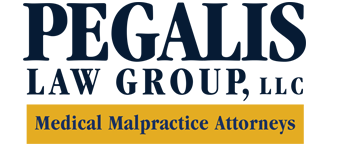-
Overlooked Intravenous Mistakes
Although healthcare providers are typically conscientious and work hard to ensure that errors don’t happen, medical malpractice and medical negligence can and do occur. One often-overlooked area of mistakes in the medical setting is errors with intravenous systems. Here are some commonly overlooked IV mistakes that every patient should know about.
Not Recognizing Damage to the Infusion Device In the past, checking infusion devices for signs of damage was commonplace in medical settings. Now, because devices come with integrated security features, checking every device before using it is often overlooked. Unfortunately, devices can have damage that is not caught by the integrated safety system that puts patients at risk. Often, this damage could have been identified during a pre-use inspection of the infusion device.
 Not Using the Roller Clamp
Not Using the Roller Clamp
IV tubing comes equipped with a roller clamp that allows the tubing to widen and narrow as necessary to control the flow of medication. Closing the roller clamp stops the flow of medication completely, while opening the clamp the entire way allows medicine to flow unrestricted into the patient’s line. Not using the clamp appropriately or failing to use the clamp at all can cause patients to receive an inadequate amount of medication or may cause them to receive too much. Both scenarios can be dangerous for patients and can impact treatment outcomes.Not Checking the Drip Chamber
The drip chamber of an IV infusion device lets air escape from fluid to reduce the risk of an air embolism. It also helps to control the rate of fluid delivery. A faulty drip chamber could provide a patient with too much medication, which can be life-threatening. Safety features of IV systems are not always sufficient to identify problems with the drip chamber, so if it is not manually checked, medication could be delivered too quickly, jeopardizing the patient.If a problem with an IV infusion system occurred when receiving medical care, causing a permanent injury contact the medical malpractice lawyers at Pegalis & Erickson, LLC. Our New York medical malpractice attorneys will gather the details and help determine if there was medical negligence.involved. Contact us today by calling (516) 684-2900.
-
Birth Injuries and Infant Feeding Problems
Occasional fussiness with feeding is usually nothing to be concerned about. But if your baby consistently has problems feeding or hasn’t been gaining enough weight, it’s time to see a doctor. There are many possible causes of poor feeding, including previously undiagnosed birth injuries. After a diagnosis of a birth injury, consider speaking with a lawyer to determine whether the cause might have been medical malpractice.
 Causes of Infant Feeding Problems
Causes of Infant Feeding Problems
Quite a few medical issues can lead to feeding and swallowing problems, including neurological disorders caused by medical negligence. Cerebral palsy is one example. Oral motor dysfunction is common in children with cerebral palsy. This means the infant has trouble sucking. It occurs with either breastfeeding or bottle-feeding. Another possible cause of feeding problems is a respiratory disorder, which might be the result of premature birth. This is because pre-term babies might not be born with fully developed lungs. A third possible cause of feeding problems is neonatal hypoglycemia, or low blood glucose. Doctors should recognize the risk factors of hypoglycemia, and test the newborn’s glucose when appropriate.Signs of Infant Feeding Problems
Babies are weighed at each check-up to ensure they are gaining weight properly. Failure to thrive can indicate feeding and swallowing problems. Aside from the baby’s weight, feeding problems may be indicated by the following signs:- Very long feeding times
- Gagging or coughing during feeding
- Fussiness while feeding
- Back arching while feeding
- Excessive drooling
- Poor coordination of breathing while feeding
- Recurrent respiratory infections, including pneumonia
- Spitting up or vomiting frequently
As the child grows older and begins transitioning to solid foods, he or she may refuse foods with certain textures.
Treatments for Infant Feeding Problems
Hospitalization and tube feeding may be necessary if the problem is severe. Otherwise, specialists may recommend positioning changes, sucking improvement techniques, and oral motor exercises to build strength and sometimes swallow therapy.At Pegalis & Erickson, LLC—a medical malpractice law firm in New York—we’re committed to protecting the rights of the youngest of patients and their families. Birth injuries are distressing, but you don’t have to face this challenge alone. Call our medical malpractice attorneys at (516) 684-2900.
-
What to Do When It’s Time to Switch Doctors
There are many reasons why patients decide to end their relationships with their current doctors. Consistently long wait times, difficulty getting appointments, and frequent prescription refill errors are just a few of the most common. Other patients decide it’s time to switch if they no longer trust their doctor to provide sound medical guidance, or if the patients suspect they’ve been harmed by medical malpractice. When it’s time to make a change, find a new doctor you prefer before completely cutting ties with your old doctor’s office.
 Find a new doctor.
Find a new doctor.
Doctors typically have heavy patient caseloads, and not all of them accept new patients. Additionally, a new doctor you’re thinking of switching to might not necessarily accept your health insurance. Before leaving your current doctor, make some phone calls to confirm that you could be accepted as a patient elsewhere. Once you have a few possibilities, do some background research. Find out if the doctor has ever been the subject of a medical malpractice lawsuit. If you have special medical concerns, such as a chronic disease, consider looking for a doctor who emphasizes that area of medicine. Seek out referrals and recommendations from family, friends, and medical care professionals you are being treated by.Schedule one last appointment.
If you’re in good overall health, you might not necessarily need to see your old doctor one last time. But if you’ve been on long-term medications or have conditions that require monitoring, you should schedule one last check-up with your old doctor to get a status update on your health. There’s no need to discuss your plan to change doctors.Get copies of your medical records.
At your last appointment, request a physical copy of your medical record and once you set up an appointment with your new doctor, have your records digitally transmitted to your new doctor’s office. Patients have the legal right to access their own medical records.Schedule a wellness exam with your new doctor.
It’s best to see your new doctor for a quick check-up for the first time, rather than waiting for a problem to develop. Make sure your new doctor has received your medical records. Discuss ongoing medical management of your conditions, if applicable. Before you leave, check with the office staff about their policies, such as scheduling and cancellations.Pegalis & Erickson, LLC is committed to providing effective legal advocacy services for patients who have been affected by medical negligence in New York. We offer the resources of a large firm, with the personalized service and courteous attention of a boutique firm. Call (516) 684-2900 to request a free medical malpractice case review.
-
Prostate Cancer Awareness
 This September, you might notice blue ribbons around your town. These signify National Prostate Cancer Awareness Month, which is the second-most common cancer in American men, after skin cancer. Since prostate cancer often doesn’t cause symptoms until the disease is already advanced, it’s necessary for doctors to recommend screening tests as appropriate. Not all doctors stay on top of recommendations for screenings, which, in some cases, may form the basis for a medical malpractice lawsuit. However, you can protect your health by being proactive and asking your doctor about getting screened.
This September, you might notice blue ribbons around your town. These signify National Prostate Cancer Awareness Month, which is the second-most common cancer in American men, after skin cancer. Since prostate cancer often doesn’t cause symptoms until the disease is already advanced, it’s necessary for doctors to recommend screening tests as appropriate. Not all doctors stay on top of recommendations for screenings, which, in some cases, may form the basis for a medical malpractice lawsuit. However, you can protect your health by being proactive and asking your doctor about getting screened. There are two main screening tests. The first is the prostate specific antigen (PSA) test, which is a simple blood test. The second is a digital rectal exam (DRE), which involves feeling the prostate gland to check for abnormalities and assess its size. Confirming a diagnosis of prostate cancer requires more tests, including imaging scans and a biopsy.
Pegalis & Erickson, LLC welcome requests for case reviews regarding medical malpractice on Long Island, New York. Call (516) 684-2900 if you think you or a loved one may have suffered ill effects from a delayed diagnosis of prostate cancer.
Recent Posts
Popular Posts
categories
- Uncategorized
- Infographic
- Patient Safety
- Patient Health
- Stillbirth
- Birth Injuries
- Medical Malpractice
- Medical Negligence
- Event
- Erb's Palsy
- Injury
- ER
- Video
- Cancer Misdiagnosis
- Medication Errors
- Cerebral Palsy
- Medical Negligence Lawyer
- Anesthesia Injuries
- Brachial Plexus
- Prostate Cancer
- About Us
- Men's Health
- Skin Cancer
- Breast Cancer
- Misdiagnosis
